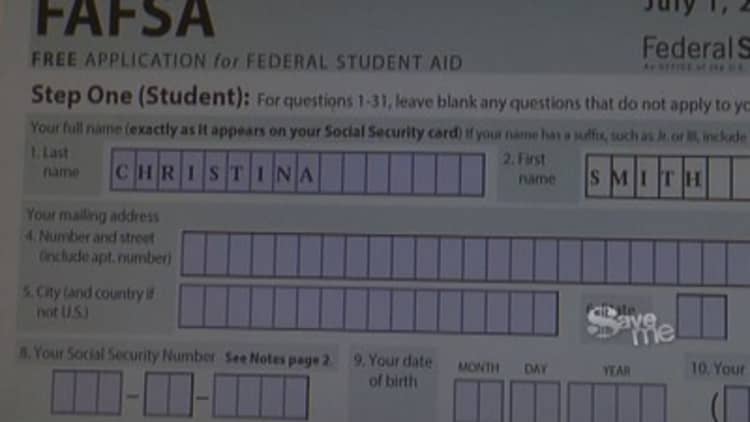If you or your child has just been admitted to college, chances are you're in a numbers game. A financial aid numbers game, that is.
Colleges issue financial aid awards to families on the heels of acceptance letters, and the numbers can look pretty impressive. But those award letters can also be confusing, and interpreting them the wrong way can cost you thousands of dollars.
Some colleges mix loans and grants in seemingly random fashion. Others fail to clearly identify loans as loans, or phrase their offers as if the loans are free money. In some cases, colleges fail to mention the cost of items such as textbooks.
"Fundamentally, award letters aren't really a counseling tool. They are marketing documents," said Mark Kantrowitz, senior vice president and publisher of Edvisors Network. "Their goal is to show you how you can afford the school, even if you really can't."
While 2,000 colleges have adopted a common format for their award letters, the majority have not, he added.
"There is no standardization because if you could easily compare, you could realize which school is more affordable," Kantrowitz said.

The dollar amounts involved are significant. Over half of all students received some grant aid in 2007-2008, and the average grant was $4,900, according to the National Center for Education Statistics. The average was more than $10,000 for students at private four-year colleges, and nearly 40 percent of all students received loans worth an average of $7,100 ($9,100 at private four-year colleges.)
Luckily, there are a few steps you can take to make sure you are comparing your aid offers accurately.
Read MoreOne reason that college tuition bill is so big
First, don't make the mistake of counting loans as free money. Kantrowitz says some colleges subtract both loans and grants from their sticker price and say that is your net cost, but he recommends recalculating your net cost, including loans as something you will have to cover eventually.
"Only in the parlance of financial aid is a loan characterized as reducing your costs," he said. "Imagine going to a car dealer and having them say 'that car is free because you have zero down.'"
Loans may be a necessary component of paying for college now, but they will have to be repaid over time, and Kantrowitz stresses that families need to be aware of exactly how much borrowing they are being asked to do.
Grants are another story.
"There is no better price than free," said Martha Holler, a senior vice president at Sallie Mae. But when you are calculating your cost over four years, make sure to note whether the grants you receive are only available for one or two years, or whether they are conditional on things like grade point averages, choice of major, or sports participation.
Read MoreHow to find the best vacation rental bargains
When comparing different colleges' offers, "you may see a one-year grant for $2,500, but a four-year grant for $1,000 annually" would be a better deal, Holler said.
Financial aid officers at colleges may not always make clear which grants may diminish over time, but Kantrowitz says about half of colleges practice front loading of grants.
One way to detect front loading of grants is by checking collegenavigator.gov, where you can compare average grants to beginning students against average grants to all students at individual colleges. If the average grants figure for all students is significantly lower, that suggests that some of a college's grant aid is front loaded, Kantrowitz said.
Terminology in financial aid letters can be confusing. Some colleges call a work/study contribution by a student "self-help aid," for example.
Sticker prices can also throw consumers off. Private four-year colleges tend to have much higher stated costs, but well-endowed schools may also offer much more grant aid.
"Sometimes it's that more expensive school that costs you less out of pocket," Holler said.
—By Kelley Holland, Special to CNBC




.jpg?v=1532564705&w=160&h=90)
